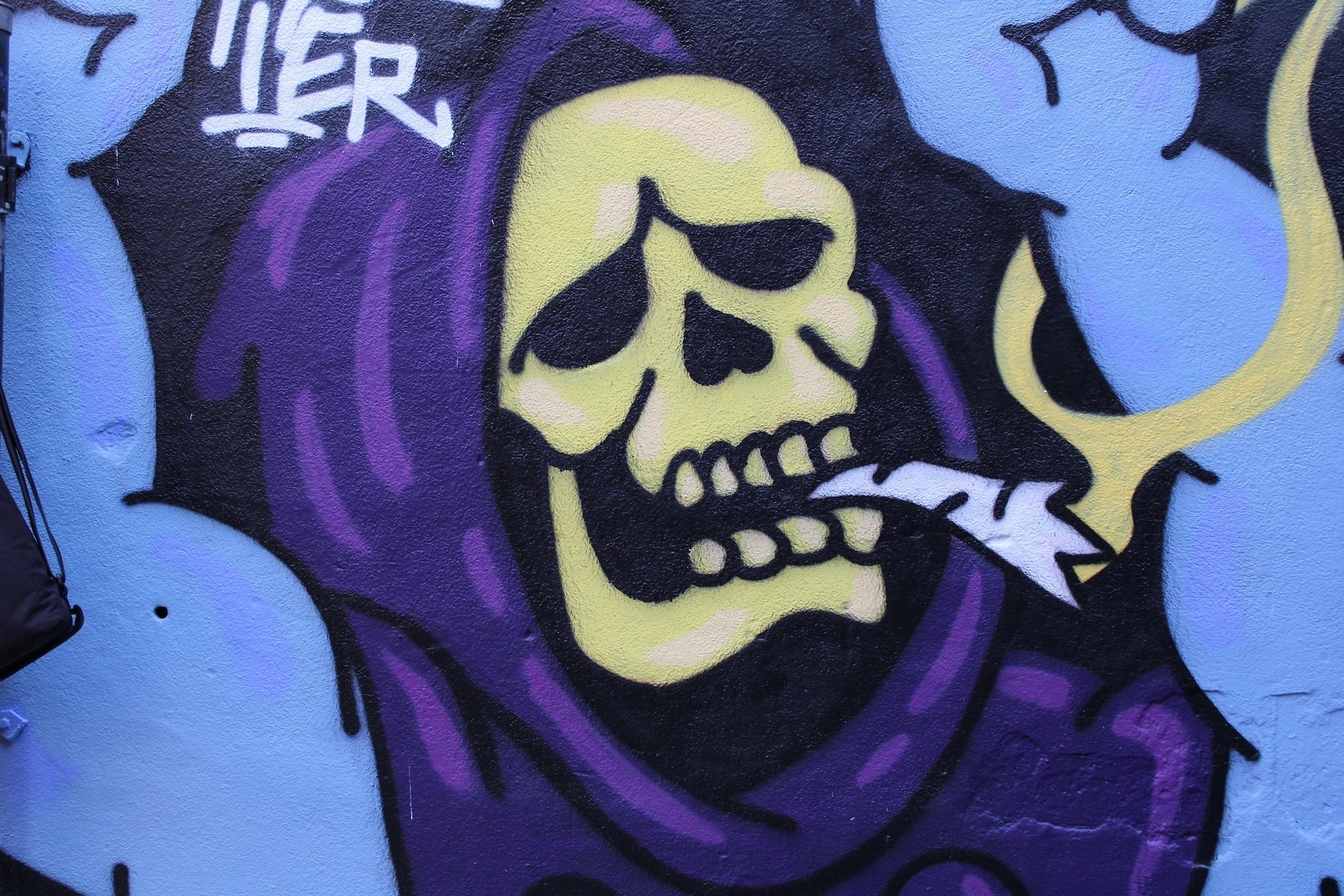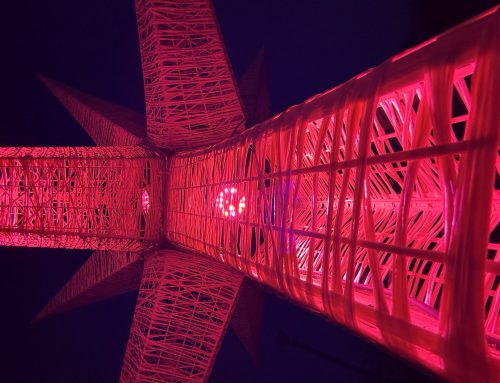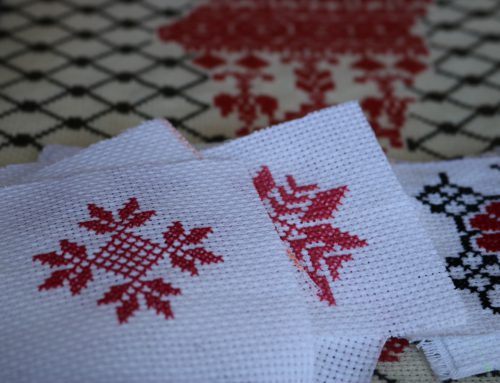Alessandro De Luca & Briahna Mc Tigue
“Art is creative expression. It could be anything,” says street artist Sterling Downey.
As an artist, Downey works under the name Seaz, and is well aware of graffiti’s legal status. He, however, doesn’t believe that this should downplay its artistic merits.
“Now, what is vandalism? Painting on a surface without permission, damaging a surface, etc.,” says Downey, who is also a Montreal City Council member. “If art can be anything, then by definition, it can be vandalism. Switch that around, can vandalism be art? Of course it can.”
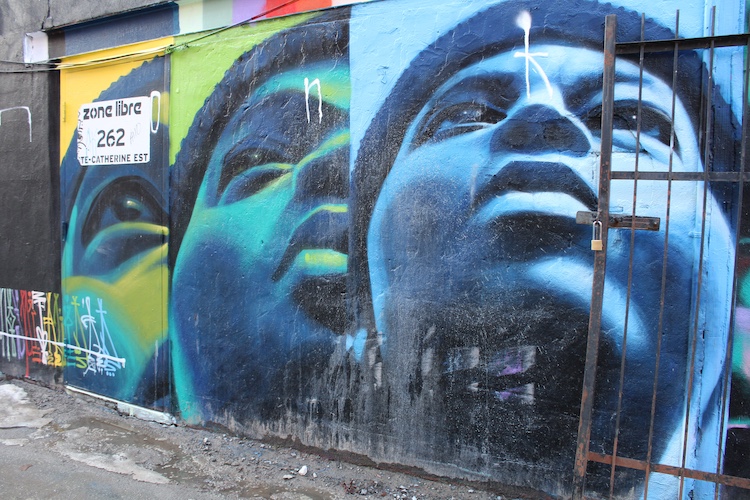
One of the many street artworks that can be found at the Under Pressure festival, located on St Catherine street, behind les Foufounes Electriques.Photo by Alessandro De Luca.
Downey promotes the work of local graffiti artists through the Under Pressure Graffiti Festival, which he founded in 1995. It gives artists a platform and supports their works.
West Island businessman Gursagar Singh, owner of St-Anne-de-Bellevue’s Singh’s Arcade, supports local street artists by commissioning murals and giving them access to his resources.
“I’ll make clothes for them, and I’ll connect them with people in my network who may want to collaborate on all sorts of projects,” he says.
However, Singh believes that not all artists have the city’s best interests in mind.
“There are some artists that genuinely feel that they are making their city nicer, and they spend a long time expressing themselves with extensive detail and ingraining themselves into the culture of the city. Those artists know that they aren’t just representing their own name, they are representing their city,” says Singh.
“Unfortunately, some others will just do a quick, ugly tag to get people to see their names. That can sometimes be something selfish or territorial, which I cannot get behind.”
While Singh uses graffiti to decorate his business in a positive light, not every business owner shares this same enthusiasm.
Lux Picnic, a local event planning company, witnessed first-hand some of the negative aspects that come with graffiti.
“We had a client coming from the US who wanted a picnic under the Lachine canal,” explains owner Trina Wylie. “Once we got to the location, the client saw all the graffiti that’s down there, and pretty much ran away.”
While the issue was eventually resolved by changing the location of the event entirely, the client’s initial disappointment was an eye opening experience for Wylie.
“I’m not personally against all graffiti, but after that incident, I can definitely see how it can impact someone’s business in a less than positive way as it did to mine,” she explains.
Preserving public and private spaces for street art: motivating or moot? Video by Briahna McTigue.
Artists also use graffiti as a way to spread political messages on current events, with the most recent example being the war in Gaza.
While numerous graffiti messages have highlighted support for the Palestinian community, others have veered into hate speech—a domain Downey asserts has no place within graffiti culture.
“This enters into an area of hate, and uses a public space to promote or incite that hate and attack individuals,” says Downey.
He draws a comparison to his early days of punk-rock-inspired graffiti, when rebelling against authority influenced his artistic expression.
“When I write ‘Seaz’ on a wall, I’m not trying to attack anybody. I’m not using it to hurt somebody. The most aggressive part of writing my name on a wall is toward the building owner, by not taking the cost to remove it into consideration,” he explains.
“Putting a message that could incite violence, or create fear, is unacceptable and has to be removed immediately.”
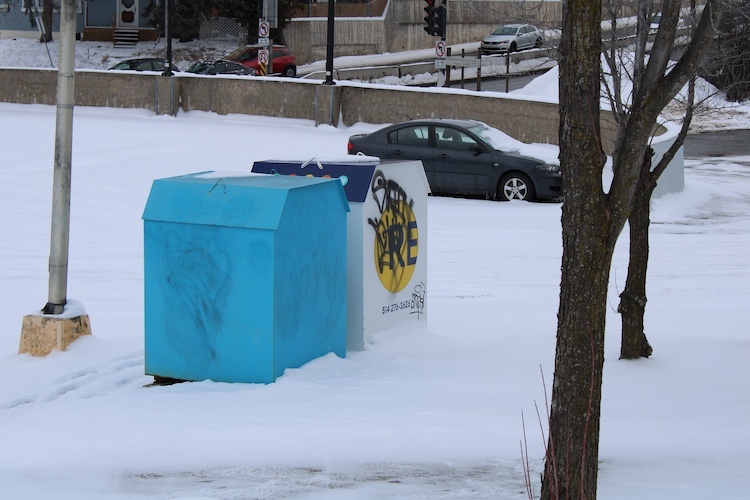
Cleaned graffiti at the St-Anne-de-Bellevue train station. Photo by Alessandro De Luca.
Downey describes the importance of context when it comes to political graffiti.
“It is almost like having a one-sided conversation. Most people just want to scream what they have to say, but don’t want to hear what anyone else has to say,” he explains.
When it comes to removing these hateful messages, Downey has often taken matters into his own hands due to a lack of action from the city itself.
“If I see something anti-Semitic, for example, I’m just going to paint a box over it,” he says.
Now serving in the Montreal City Council, Downey works on various graffiti cleanup campaigns, and says he has cleaned up as much illegal graffiti as he has painted.
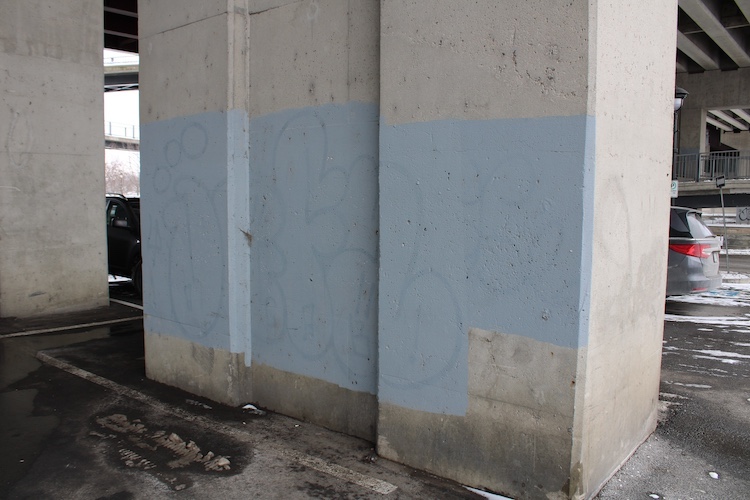
Remnants of an old tag poking through a cleaned wall in St-Anne de Bellevue. Photo by Alessandro De Luca.
Graffiti has a long history in Montreal, going back to the 1970’s and artists like Zilon.
“When he started, he would find abandoned cars and buildings in the most run-down parts of town and paint as if it was his playground,” explains former artist Jenny De Luca.
“He took something ugly and gray and gave it a lot of beauty. Technically, that’s illegal, but by the same token, you’re taking something ugly and adding beauty to it. A splash of colour can lift the human spirit,” she says.
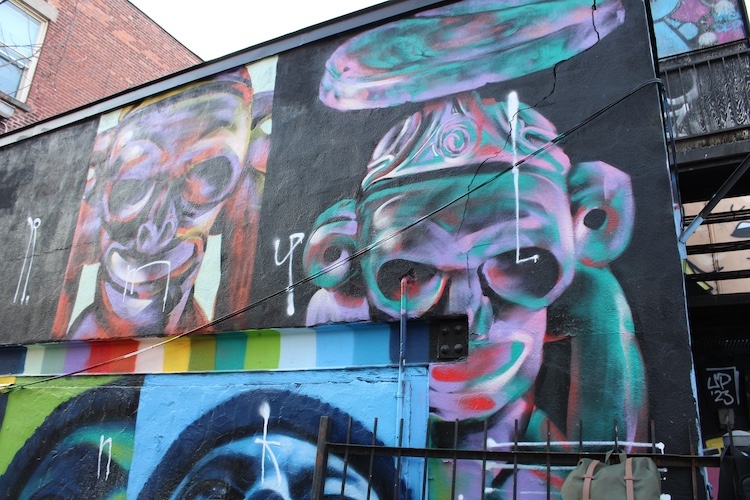
A Zilon-inspired artwork found at Under Pressure on St-Catherine street, showing the powerful effects of colour on a wall. Photo by Alessandro De Luca.
Zilon would often get commissions to paint murals, which is something that De Luca used to view as “selling out.”
She, however, no longer has that mindset.
“At the end of the day, an artist has to eat,” says De Luca, jokingly.
“Now, I think selling out would be if a big corporation would reach out to you, and they’re going to pay you a million dollars to do a mural promoting them. All of a sudden, you’re forced to support something. Then you’re a sellout,” she explains.
De Luca says that people should celebrate Zilon and remember the street art pioneer for his rebel, anti-establishment attitude. “Anything that’s forced down on you, force back. Don’t bend over for anyone. Those would be the perfect words.”
